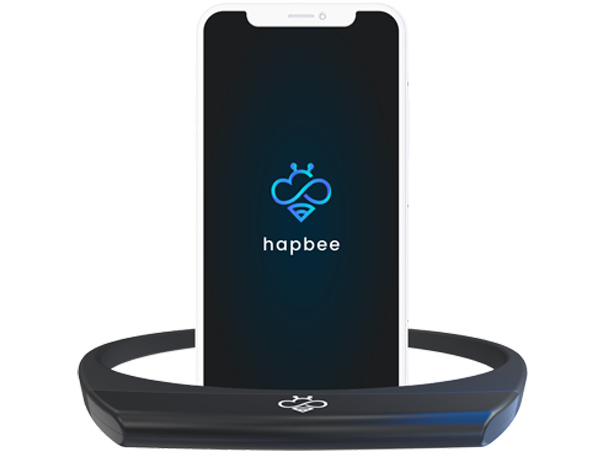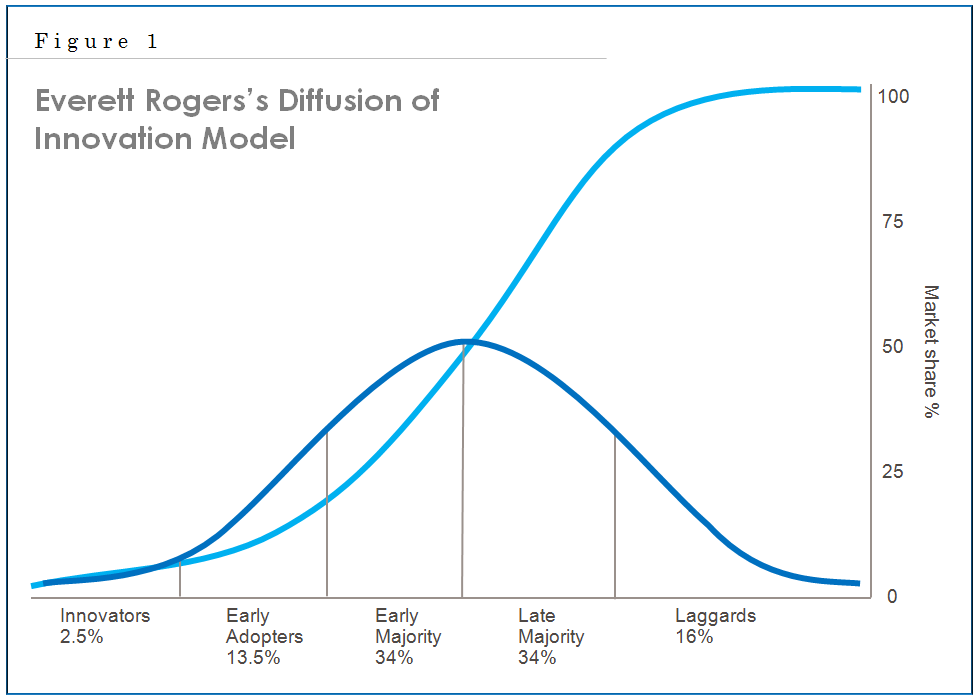A Brief History of Wearable Technology
Technically speaking, the first wearable technology was invented in the 13th century when eyeglasses first hit the market; purportedly in Pisa, Italy.
It took another 300 years before the second wearable technology came to market when wearable clocks led to the invention of the wristwatch.
What started out as a nameless sector in the 13th century with the advent of eyeglasses took 600+ years before bearing its third product offering of personal speakers worn over one’s ears.

Headphones were the main innovation in wearable technology for the better part of a century. Then in the 1980’s the hearing aid hit stores creating the first bionic humans.
But it’s only in the last 20 years that we have seen the beginning of a Cambrian Explosion in wearable tech.
In 2002 bluetooth technology hit the market and allowed wireless interactions with portable devices. Since then the wearable tech sector has significantly increased its product offerings and created many multi-billion dollar businesses along the way.
Multi-Billion Dollar Wearable Tech Business
While it’s hard to get pin-point accuracy on the valuation of the portion of Apple’s business attributed to its Apple Watch segment, Fortune magazine reported in 2016 that at that point in time Apple had sold 12.1 million units of their device and generated $5.7 billion in revenue which would give it at least a $10 billion valuation on its own.

Fitbit launched its first product in 2009 and has gone on to sell more than 120 million devices to over 29 million users. Fitbit sold to Google’s parent company, Alphabet, for $2.1 billion in 2021.
A more recent addition to the billion dollar wearable tech club is WHOOP – the fitness focused wearable technology company whose wearable band measures and monitors strain, recovery and sleep. WHOOP’s most recent round of funding pegged the company at a $3.6 billion valuation – making it the most valuable stand alone company in the space.

Yes, WHOOP’s one product and service offering combination is valued at close to $4 billion. Wearable tech is a good sector to be in. And it’s growing.
Projected sector growth valuations and growth rates vary widely, but one thing they all have in common is that they point up and to the right.
Enter Hapbee Technologies Inc: The Next Generation of Wearable Technology
The newer wearable devices all have one thing in common. They all measure or track the user’s biometric data. Measure being the operative word here. They give the user data and it’s up to the user to make changes in lifestyle or habits to improve the various markers being tracked.
Hapbee’s wearable technology takes the logical next step in the evolution of the sector. Hapbee’s technology is able to interact with biology in a novel way, leveraging magnetic fields.
The Hapbee device actually stimulates one’s bioreceptors and alters one’s ability to focus, relax, recover or sleep. More generally speaking, it empowers the user to influence how they feel.

This claim is often met with incredulousness, as the capability of many revolutionary technologies are, at least at first.
In an effort to disarm the understandable skepticism Hapbee offers a free 90 day trial and a 365 day money back guarantee – including free return shipping.
Before we get to the business model and market potential let’s go over the company’s claims on how the device works.
How Hapbee’s Ultra-Low Frequency Magnetic Field Technology Works
I’m not going to pretend to be able to explain the science from first principles but I can offer a heuristic explanation.
The idea is actually quite simple.
After ingesting a substance, like caffeine for example, it is not the chemical reaction of metabolizing the caffeine that directly leads to its stimulatory effects. Rather, the resultant magnetic field created from the chemical reaction is what stimulates one’s bioreceptors to induce the stimulatory effect.
The key to Hapbee’s technology is being able to both record the resultant magnetic fields from metabolizing ingested substances and replay those specific magnetic fields to induce their effects.
The recording of these molecular signatures is done in the lab. The replaying is done wherever one chooses to use their Hapbee device.
The best part about this delivery mechanism is that there are no side effects from metabolization and the duration of the effects can be toggled on and off with the tap of a button on the app.
Click the blue button at the bottom of this article to hear a more technical explanation from Hapbee’s CSO, Brian Mogen.
The Hapbee Market Opportunity and Business Model
Hapbee currently solely falls into the categorization of Wearable Technology. This is because, at present, the Hapbee wearable necklace is the only digital delivery mechanism for the growing library of Hapbee signals, also known as blends.

Of the previously mentioned wearable technologies, Hapbee’s business model most closely resembles that of WHOOP. Like WHOOP, Hapbee’s goal isn’t to generate significant profits from selling hardware. Rather, the hardware is the means of delivering a service.
Customers need the hardware in order to access the growing library of experiences Hapbee can deliver. Currently access to that library is priced at $19 per month.
Think of it like Spotify for a different kind of music. Music that replicates the effects of various ingestible substances or supplements.
I don’t foresee a future where Hapbee ceases to have Wearable Technology as a large segment of its business. It’s far too convenient and portable to have the technology in wearable form for it to ever go away. But it’s clear that the technology doesn’t have to be wearable. Just earlier this year Hapbee presented three new product prototypes. Two out of these three weren’t wearable per se.

Fleshing out growth avenues further, Hapbee is actively seeking and making new partnerships to bring new compounds to their library for digital delivery.
Just earlier this month Hapbee announced a partnership with BIOptimize to produce and add to their library some of the more successful supplements that BIOptimize currently distributes in pill and powder form.
From this I can see a future where Hapbee is the platform and marketplace for digital delivery of all sorts of ingestible compounds.
This should come as no surprise if one looks at CEO Yona Shtern’s history and success as a founder of the platform Beyond The Rack.
There are many avenues for potential growth of this technology as a consumer facing business.
The Burgeoning Opportunity of Hapbee Technologies
In its first year of business Hapbee brought its device to roughly 5000 early technology adopters and self-proclaimed biohackers. The device and technology were quite popular in this small, niche addressable market.
The marketing of the technology was a grassroots effort whereby executives of the company would go on a podcast with an appropriate audience and explain how the device works and what it does. Sales would spike in the following days and then dwindle back down. It wasn’t a scalable sales model but the company was learning valuable information about what messaging resonated with its audiences.

Mid last year a new executive management team was put in place. A management team of veritable all-stars in building small companies into big ones. A team with plenty of experience in getting products and services out of niche markets and into the mainstream. I encourage anyone who is interested in the company to learn more about the team in the investor deck and then check them out on LinkedIn; it’s a collection of very impressive resumes.
In January of this year Hapbee closed a $7.7M CAD financing and has since been putting that capital to work with a full fledged marketing program that involves presenting the benefits of the device to a much broader audience.
Additionally, the team has been building out a litany of partnerships that will bring wider distribution of the product as well as a much broader library of Blends that replicate the effects of supplements and ingestibles that already have a large consumer base. Now those ingestibles will have digitally deliverable counterparts.
It’s an approach that makes a lot of sense. Identify popular consumables with an existing, large customer base and onboard those compounds to the library of blends available for digital, on-demand delivery.
Netflix devoured Blockbuster’s market share by offering digital, streaming delivery of products that were previously only available via physical delivery. Hapbee is disrupting the marketplace for ingestible compounds in exactly the same way.
Bill McClain – Editor of The Momentum Letter
About the author.
Disclosure: I own two Hapbee devices because my wife commandeered my first one.
Disclaimer
The Momentum Letter is a marketing partner which has received
compensation to direct traffic to this coverage. Full Disclaimer



